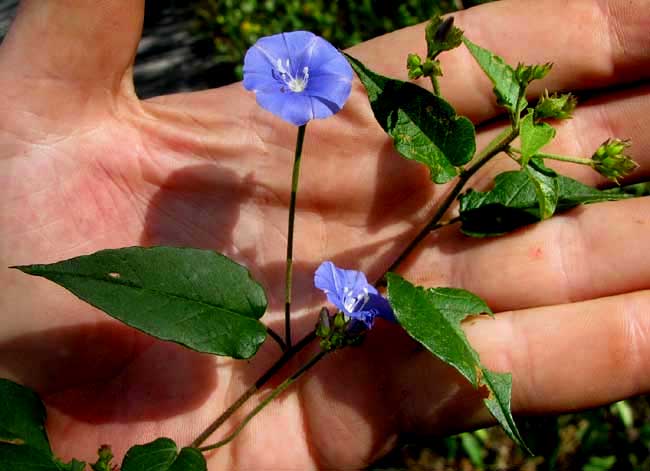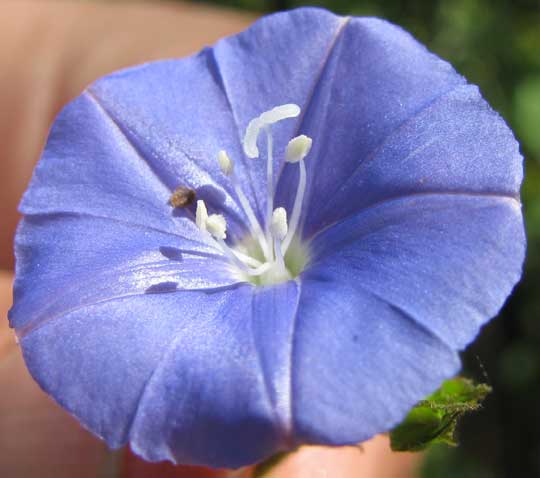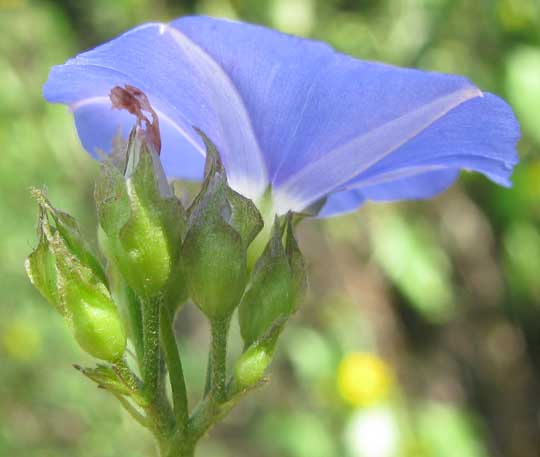Excerpts from Jim Conrad's
Naturalist Newsletter

from the January 9, 2011 Newsletter issued from Hacienda Chichen Resort beside Chichén Itzá Ruins, central Yucatán, MÉXICO; limestone bedrock, elevation ~39m (~128ft), ~N20.676°, ~W88.569°
SKYBLUE CLUSTERVINE
Those Sunflower Goldeneyes I showed you last week, eight feet tall and loaded with yellow flowerheads that heaved in the wind and sunlight, this week were even more spectacular, especially along roadsides. They formed glowing yellow walls that just went on and on. An extra pretty thing about them was that sometimes a delicate little vine, a morning-glory, twined into them adorning them with sky-blue blossoms. Those blue flowers were very pretty among all those yellow sunlight explosions. You can see a vine atop my hand for scale above.
A flower close-up showing five stamens and a slender, upright style topped with two horizontal stigmas, issuing from the sky-blue, funnel-shaped corolla is below:

This member of the Morning-Glory Family is known as the Skyblue Clustervine. It's JACQUEMONTIA PENTANTHOS, a native tropical American species growing wild from the southern US through here and the Caribbean to northern South America. Because of its prettiness and hardiness it's also commonly planted and sometimes escaped in many other tropical countries.
In last year's November 21st Newsletter we looked at the "Blue Jacquemontia," Jacquemontia tamnifolia, with very similar flowers and leaves. But compare a side view of a flower cluster of that species shown at www.backyardnature.net/n/10/101121jr.jpg with a similar side-view of our Skyblue Clustervine, shown below:

The former is densely hairy while our present one is not. It's another of those subtle "variations on a Jacquemontia themes" so nice to notice when you're in the field.
When this species is invited into a garden with rich soil, is given ample space for growth and is watered well, it produces flower clusters with many more blossoms than ours has when it tangles in roadside weeds. It's yet another case of proper nourishment and care releasing unforeseen potentials.